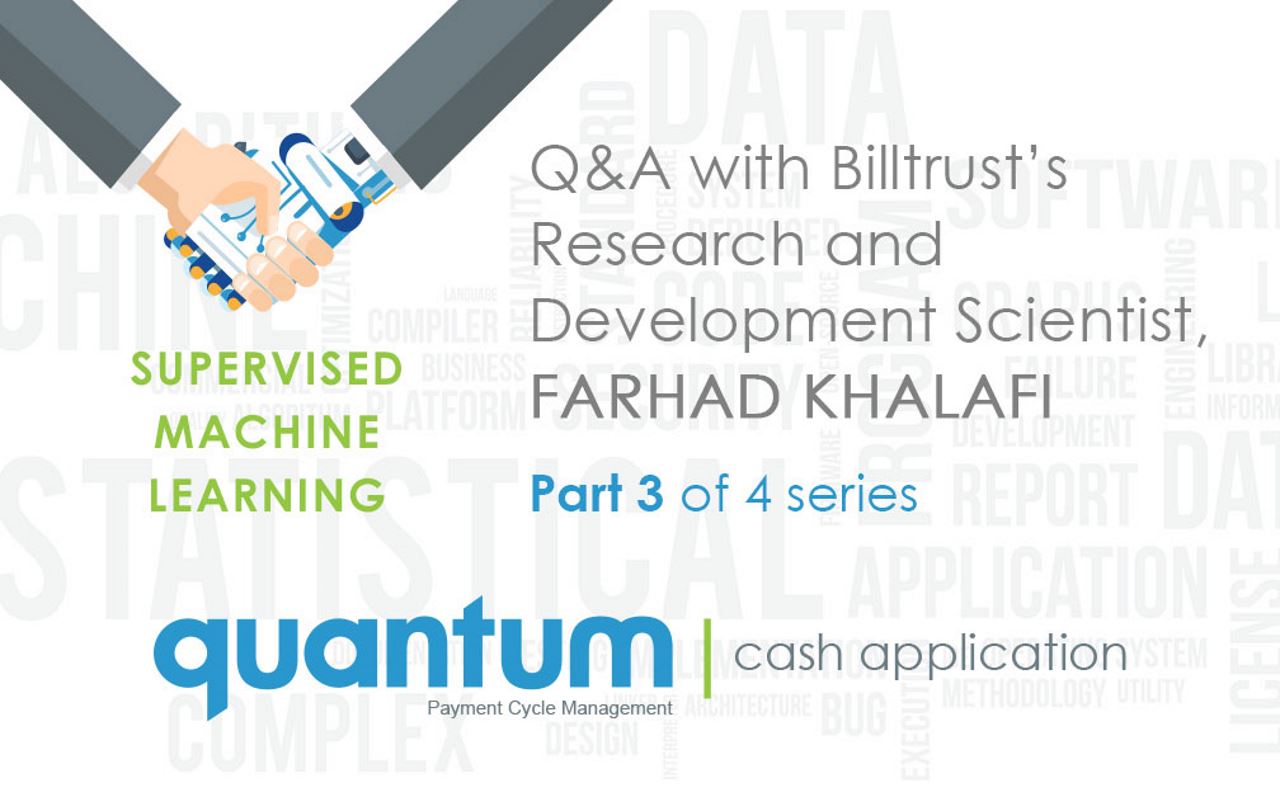Today we’re going to talk about how “smart” machines can mimic human intelligence by making decisions. Companies have recently been automating the decision-making process using machine-learning technology, but it’s not perfect and has limitations.
At Billtrust, we use supervised machine-learning technology to develop smart software solutions. Read Part 3 of our 4-part series on accounts receivable (AR) process automation. Farhad Khalafi, Research and Development Scientist at Billtrust, explains how supervised machine-learning works, and how we can benefit from it.

Q: What is supervised machine-learning?
Farhad Khalafi: A supervised machine-learning program needs to go through a learning phase before it can make intelligent decisions on data that it has not seen before. During the learning phase, the program is given data with known outcomes, also called a training set. Just like a runner practices and trains for all possibilities before the big race, this training period allows the program learn how to process data correctly, and adjusts its own parameters in preparation for dealing with new, never-before-seen data. The supervised program can also continue to learn by receiving user feedback as the program runs.
In our credit and AR applications, we use assisted correlation and line item matching reviews to provide feedback to our learning programs. When these programs are first deployed, they require some assistance so that they can tweak their internal parameters and become more accurate in perform their respective tasks. Over time, they become more autonomous, reducing the amount of manual processing.
Unsupervised machine-learning is more useful in analyzing and detecting patterns in existing data. Examples are spending habits, demographic trends and clustering detection. They are less useful in the context of credit and accounts receivable (AR), except perhaps for data mining.
Q: In your opinion, what is more accurate today for AR automation – robotics or supervised machine-learning? Why?
Farhad Khalafi: Robotics and machine-learning serve two different functions. Robots automate mundane, repetitive, and potentially tedious manual processes. Machine-learning tries to accommodate changes in input and business environment, as well as, support value judgments. Both of these are increasingly becoming part of the business process automation and decision making, but in different ways. Smart technology requires the right combination of robotics and supervised machine-learning in order to accomplish tasks quickly, accurately, and with minimal human oversight.
Want to learn more?
Don’t forget to check back next week for another fascinating discussion with the Billtrust data scientist.
Farhad Khalafi, Research and Development Scientist at Billtrust. Farhad is responsible for incorporating the state-of-the-art technology in machine learning and robotics into Billtrust’s next generation software in Credit and AR automation, and has over 20 years of experience in software development. He also holds a Ph.D. in Quantum Physics from the University of Cambridge, UK.
Do you have a question for Farhad? Ask him on Twitter @FarhadK

